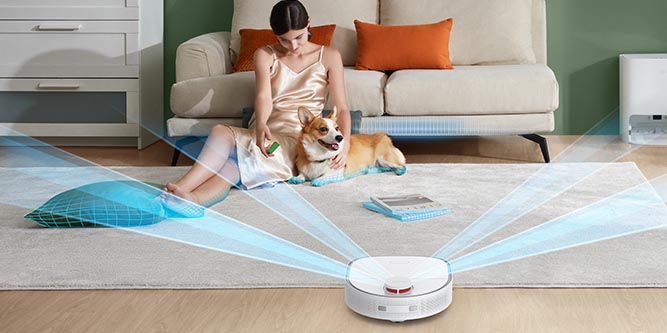Robot vacuums have been around for a long time now. But a lot has changed since the original Roomba was released in 2001. Instead of wandering around the house randomly, modern robot vacuums utilize intelligent mapping. This allows them to more efficiently clean your entire home, instead of missing spots all over the place. Nowadays, some manufacturers are going even further, and building mops into their robot vacuums. And if you’re feeling even more ambitious, you can even order one with a self-emptying function. These mopping vacuums empty themselves into the docking station. So instead of emptying the vacuum every time you clean, you only have to attend to it occasionally.
We’re about to review three of the best self-emptying robot vacuums and mops available online. We’ll begin with the Yeedi Vac Station. This is an integrated mopping vacuum with automatic carpet detection. Next, we’ll check out the Dreametech W10. This is an ultra-powerful mopping vacuum with a self-cleaning function and self-emptying water tank. Finally, we’ll look at the iHome AutoVac Halo. This is a more lightweight cleaner with a rugged design. But which one is going to be the right choice for your home? To find out, we’ll have to look a lot closer at each one of these options. We’ll talk about their physical design, their cleaning functions, and the app features. After we’ve done all that, we’ll be able to make a fair comparison. Let’s begin!
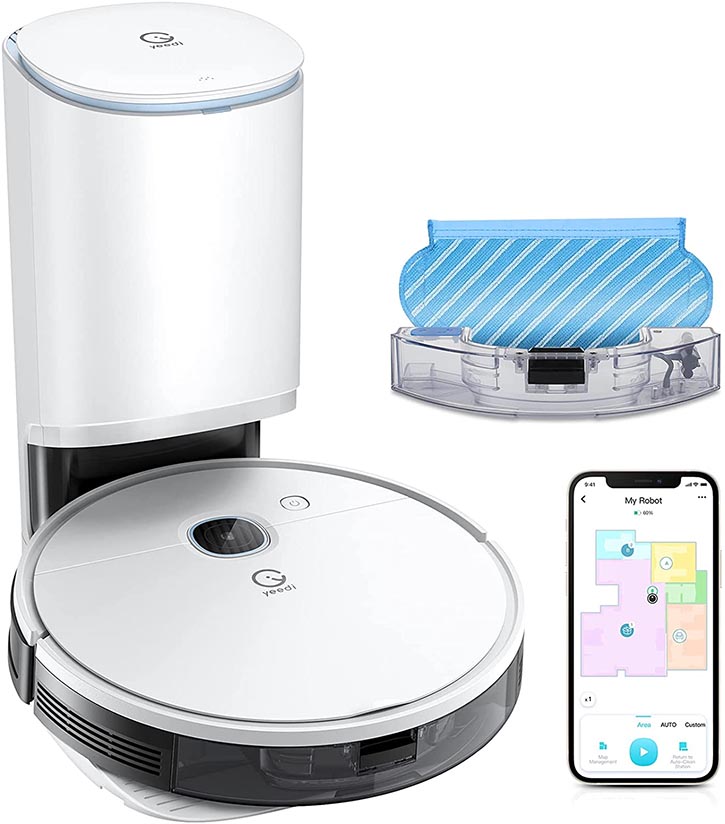
Yeedi Vac Station
Yeedi is well known for their long line of multiple popular robot vacuums. With the Yeedi Vac Station, they’ve now added mopping and self-emptying functions. The vacuum has a two-tone design, with a white upper housing and black lower hopping. In the sides, you can see the transparent dust bin and water reservoir. Near the top center, there’s a visual sensor, which has a fisheye lens for navigating the vacuum. Interestingly enough, there’s no LIDAR or other technology. The Vac Station does all of its navigation visually. Also on the top of the housing is a power button, which is used to manually initiate a cleaning cycle.
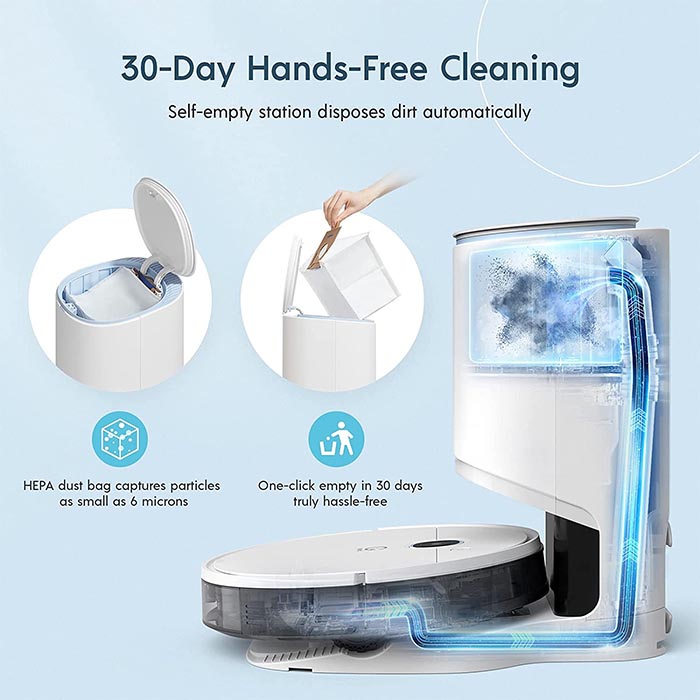
On the bottom of the vacuum, you’ll find two large, rubbery wheels, which can cross steep floor transitions. There’s also a third wheel, to the front, to aid with steering and navigation. There’s a horizontal brush to the right, which spins like a helicopter blade. On solid floors, it sweeps debris in from the sides and into the main brush. The main brush itself has a modified spiral shape, with alternating brushes and rubber flaps. This combination makes it very effective on both carpets and solid floors. Behind that, there’s an attachment surface, where you can optionally attach a mopping pad.
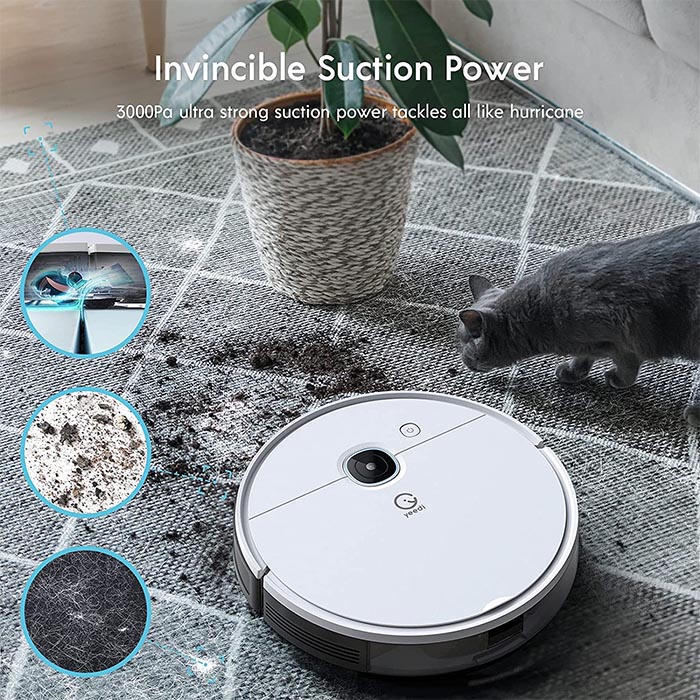
The charging base is big and beefy, with an oblong form factor. It stands a little over a foot tall, and is constructed from the same white plastic as the vacuum. There’s a cutout in the bottom for the vacuum to pull in and charge. The upper portion houses a dust bag, and the lid opens easily with a flick of your thumb.
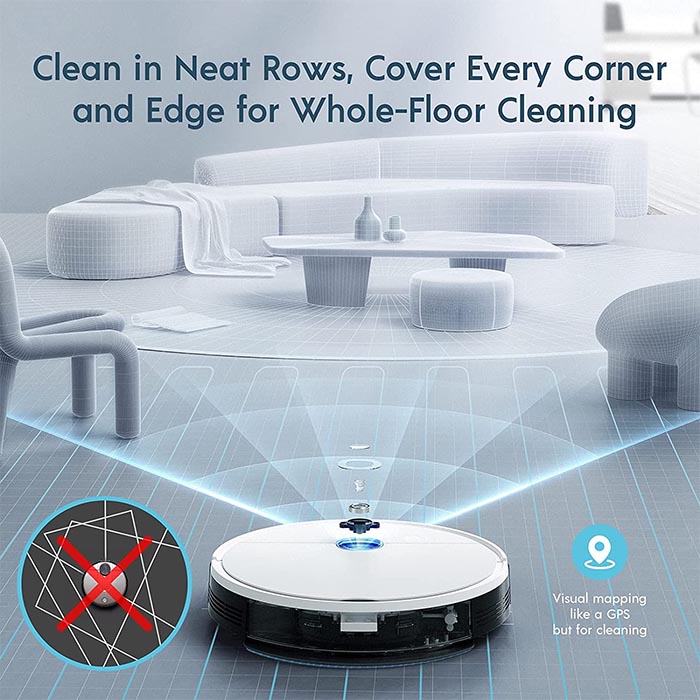
Cleaning Performance
The Vac Station has a maximum suction power of 3,000 Pascals (Pa). This is a little bit more than your average robot vacuum, and it’s enough for most everyday messes. You can even handle debris like dried beans without a hassle. The mopping function is also designed for everyday messes. It works fine for day to day mopping, but if you’ve had a massive spill, you’ll want to mop by hand first.
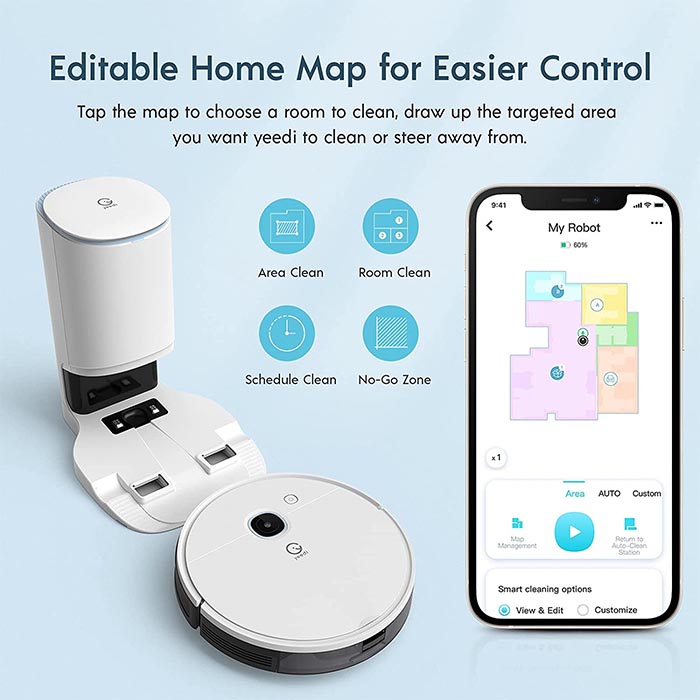
When you’re running the vacuum function alone, you can expect to get about 200 minutes of cleaning per charge. That’s more than 3 hours, and it’s enough to clean almost any floor plan. If you’re using the mopping function on its own, you’ll get somewhat shorter life, about 150 minutes. Using both functions simultaneously, you’ll get more like 90 minutes of use. Even so, that’s sufficient for cleaning a significant area. And if you have a larger home, you don’t have to worry. If the Vac Station has to return to its base, it will automatically resume cleaning after it’s fully charged.
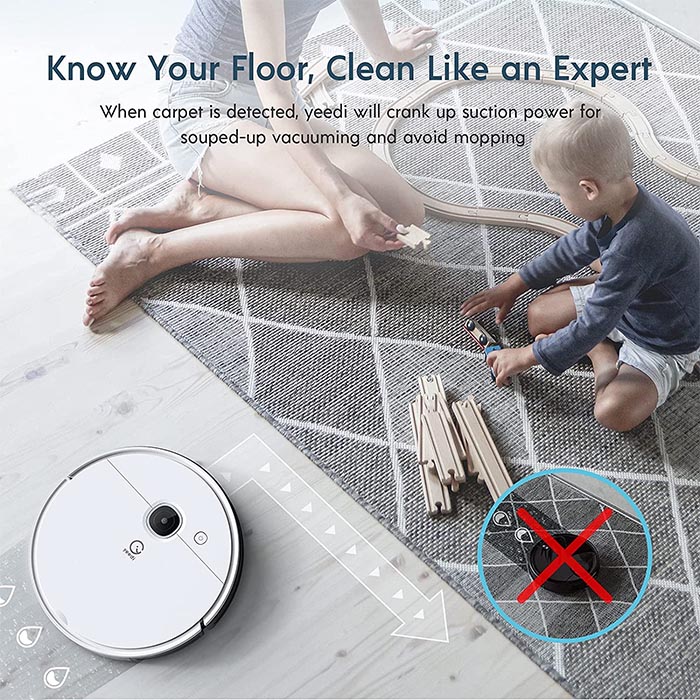
All the control functions are performed through the Yeedi app. Once you’ve installed the app and paired with your vacuum, you’ll have a number of options. You can map your home, and create custom cleaning schedules for all your rooms. And if you prefer voice commands, the Vac Station works with Alexa and Siri.

Dreametech W10
Dreametech is famous for their powerful robotic and upright vacuums, like the Dreame H11 Max. The Dreametech W10 is one of their most powerful – and most expensive – models. But if you’re looking for an absolute top-tier robotic cleaner, it’s tough to beat. The first thing you’ll notice is the shape, because it’s not round like most robot vacuums. Instead, it’s D-shaped, and drives with the flat end at the front. The housing is a durable, glossy white plastic, with a sensor in the middle of the front.
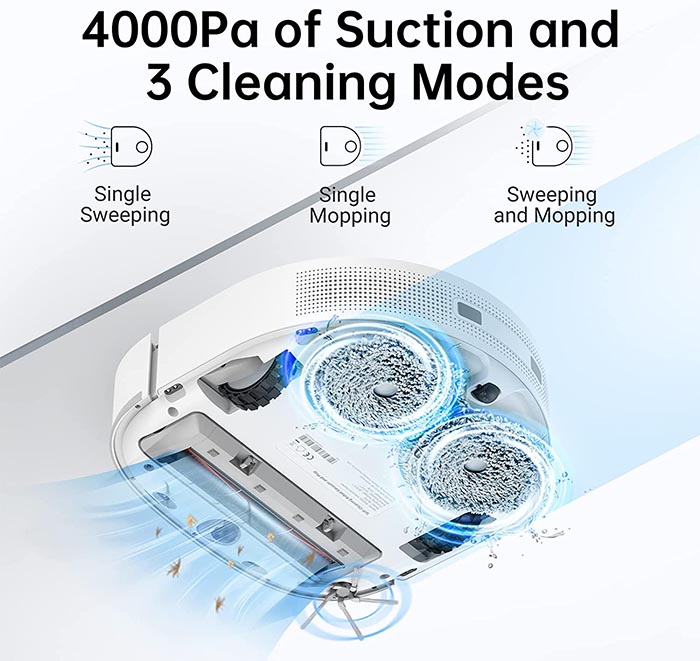
On the bottom of the housing, things look a little different than most robot vacuums. You’ll find a pair or rubber wheels, which can cross even a 0.7-inch transition. Between them, there’s a roller brush, like most robot vacs, but that’s where the similarity ends. At the back, there are two separate round mopping pads. These are made of a shaggy fabric material, and they’re much more effective than your typical microfiber mop pads. Because they rotate instead of just vibrating or dragging, they can clean up even caked-on dirt.
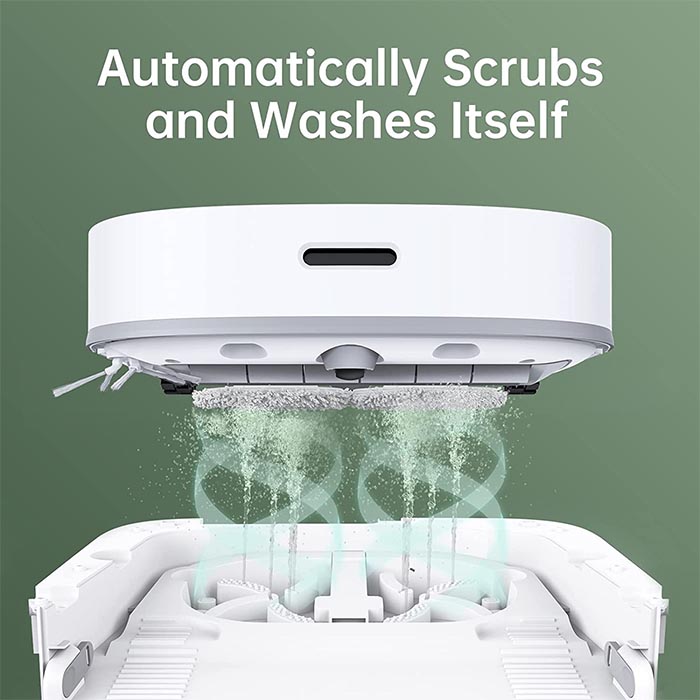
On the top of the housing, there are three soft touch control buttons towards the front. The first activates a cleaning cycle, while the second sends the cleaner back to base. The third activates a self-cleaning function, which we’ll talk about in the next section.
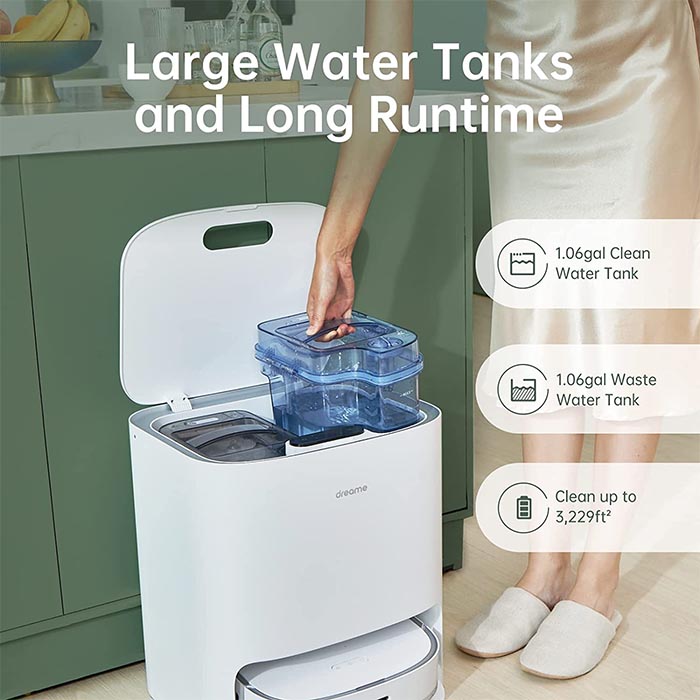
Cleaning Performance
The Dreametech W10 has 4,000Pa of suction power, which is truly exceptional for a robot vacuum. You’ll be able to clean just about anything, short of large, shop-vac-style messes. There’s also variable suction, so the vacuum will back off when it’s on a floor with no debris. This helps conserve battery power, ensuring that you get the longest possible cleaning cycle. The 6,400mAh battery is rated for 3 ½ hours of performance, but that’s assuming you’re only using the vacuum. If you’re using the mopping function as well, you’ll get shorter life. Regardless, you’ll still be able to clean almost around 3,000 square feet on a single charge.
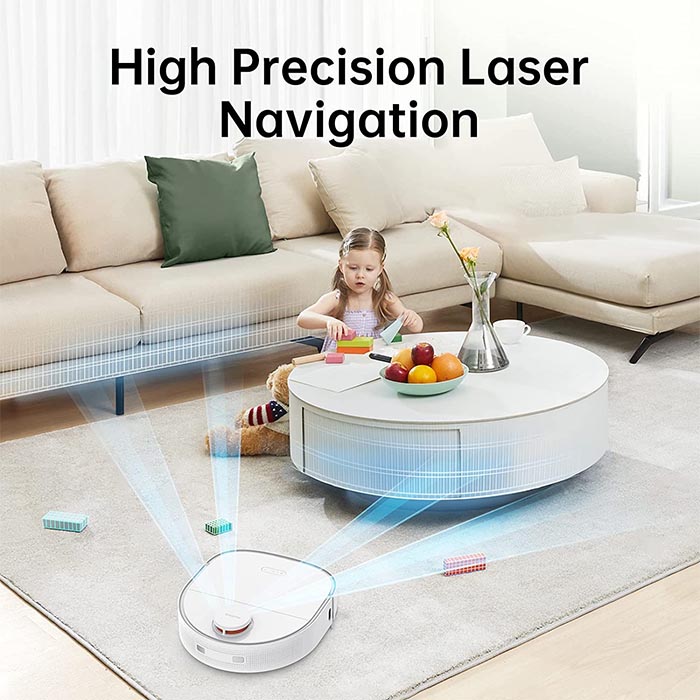
One thing we really liked about the W10 is the charging station. It’s enormous, with 4-liter clean and dirty water reservoirs inside. This allows you to perform multiple cleaning cycles before you have to mess with any water. Not only that, but it allows the mop pads to self clean. To do this, just press the cleaning button while the vacuum is in its dock. Jets of water will shoot into the mop heads, which will spin around to clean themselves. Then, the base will blow them dry with hot air, which prevents mold build-up. That said, you’ll still have to manually empty the vacuum’s dust hopper each time you clean.
Using the Dreametech app, you can do a lot more than you can do with only the physical buttons. You can set no-go zones, schedule cleaning for particular times, or pair the app with Alexa. You can even designate which areas are to be mopped, and which ones are only to be vacuumed.
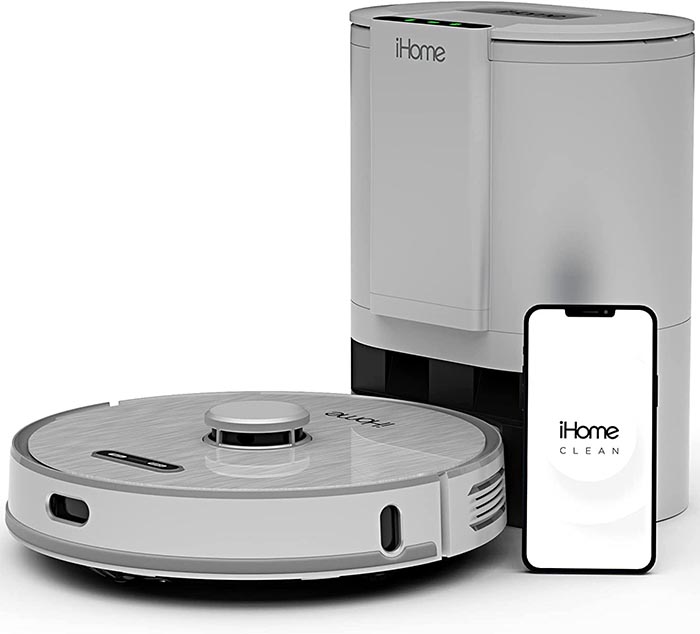
iHome AutoVac Halo
iHome is primarily known for their home electronics, like their flat USB wall chargers. That said, they make quality equipment, and we were interested to see how their AutoVac Halo performs. This is a traditional, disc-shaped robotic floor cleaner with a grey plastic housing. There are sensors visible on the front and sides, with a see-through back where the water reservoir level is visible.
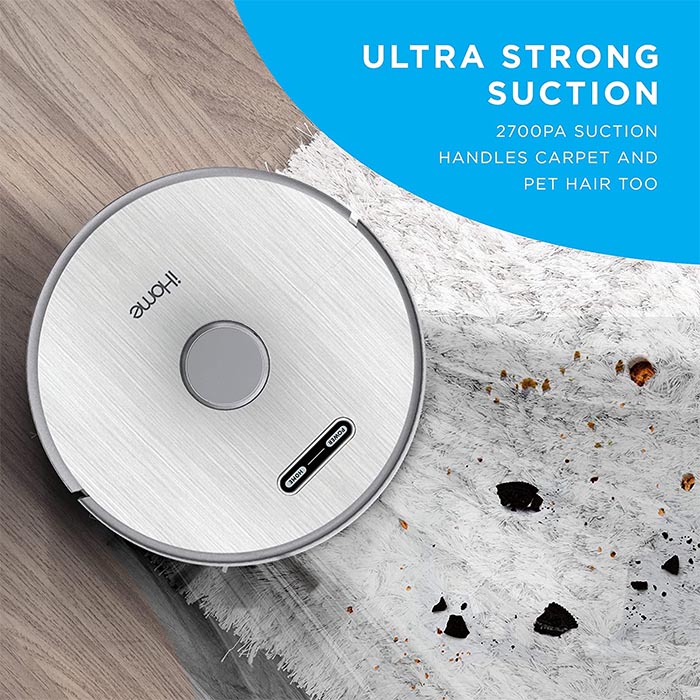
The top panel is made from durable brushed aluminum, with enough shine to see your reflection in it. Towards the front, there are a pair of small, soft-touch buttons. These are the power and home buttons respectively, and they work similarly to the buttons on other vacuums. There’s also a LIDAR tower near the back. This is used for the mapping function, and it doesn’t stick up very far. As a result, the vacuum is slim enough to fit under most furniture.
On the bottom of the housing, the two main wheels are located to the sides. They’re capable of crossing a reasonably large transition, so you can cover most floor plans with ease. The smaller, rotating wheel towards the front is used for steering the vacuum. To the right of the front wheel, there’s a horizontal brush that sweeps in dust and debris. The main roller brush is located directly between the drive wheels, and is pretty straightforward. The mopping pad is located at the back, so it follows along behind the roller.
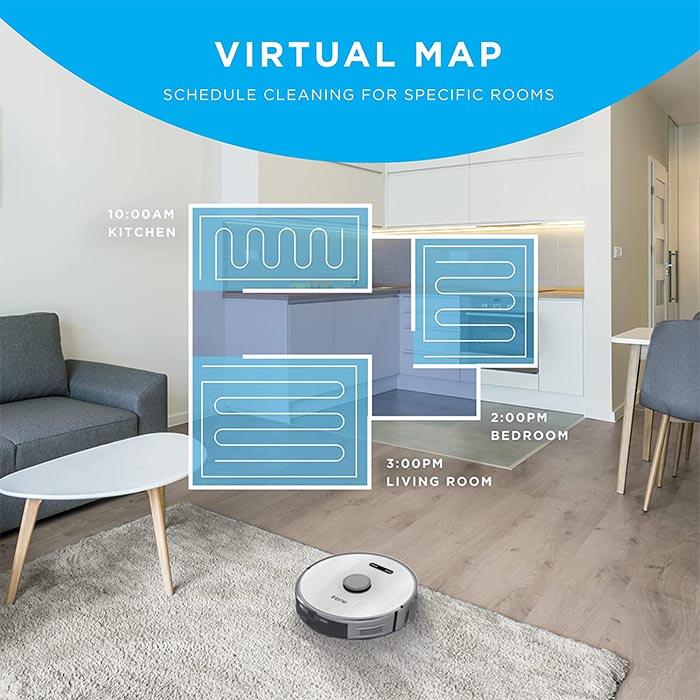
The charging station is constructed from the same grey plastic that’s used for the vacuum housing. It’s tall, with an oval profile, and a cutout in the base for the AutoVac to drive into. On the top front, there’s a row of LED indicator lights. These let you know the vacuum’s battery status, connection status, and other important information. They also let you know when the inner dust bag is full, so you know it’s time to change the bag.
Cleaning Performance
The AutoVac Halo has a suction power of 2,700Pa. That’s the weakest of our three options, but it’s around average for a robot vac. Unless you’re trying to clean up a particularly nasty mess, you shouldn’t have to worry. The mopping pad is a simple flat, vibrating pad, but it’s reasonably effective. Once again, it’s great for everyday cleaning, but not ideal for major spills or caked-on dirt.
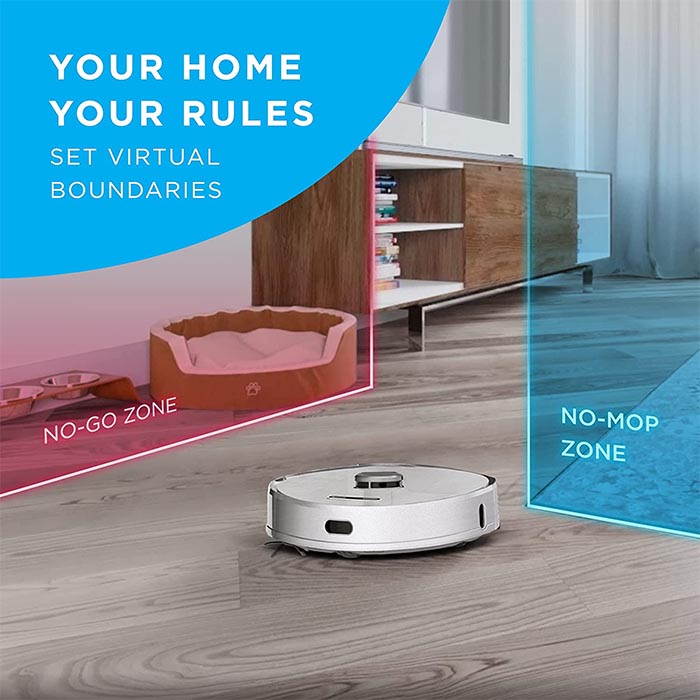
The battery is rated to last for up to three hours. That’s enough to clean even a large floor plan, but a lot depends on what you’re doing. If you’re only running the vacuum, it should last for a long time. If you’re using the vacuum and mop simultaneously, the battery life will be correspondingly shorter. But even so, you’re looking at one of the longer-lasting robot vacuums on the market.
This vacuum has a self-emptying dust bin, with a bag located inside the charging base. When the inner dust bin is full, the AutoVac will automatically return to base and empty itself. The internal bag can be emptied and refilled multiple times before needing a replacement. When it does need to be replaced, you can use a standard off-the-shelf replacement from any big box store. This allows you to vacuum for about a month without emptying anything manually. On the other hand, you’ll have to manually fill the water tank before each cleaning session.
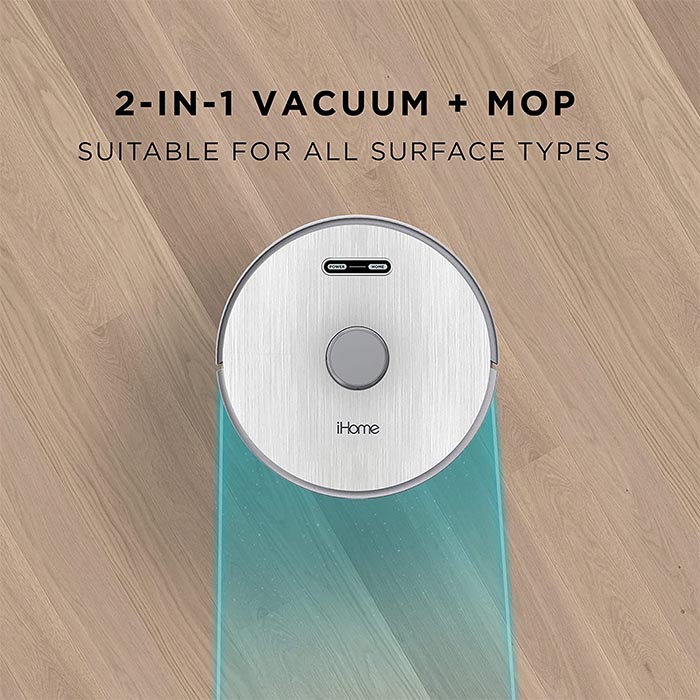
By installing the iHome app, you’ll have access to the AutoVac’s virtual map of your home. On the map, you can set no-go zones, as well as specify no-mop areas. That second feature is essential if the vacuum will be going across any rugs or carpets. You can schedule cleanings on a daily or weekly basis. You can even schedule different rooms to clean at different times. And if you prefer voice commands, you’ll have the ability to connect the vacuum to Alexa or Google Voice.
Final Verdict
As you can see, each of these robot vacuums and mops has its own distinct advantages and disadvantages. We began by reviewing the Yeedi Vac Station. This 3,000Pa vacuum includes a basic mopping function, and a HEPA-rated dust collection bag. If you’re looking for a fully functional self-emptying vacuum and mop, you’ll be pleased.
The Dreametech W10 is more expensive – a lot more expensive. But it’s the most impressive automated mop we’ve ever seen. The self-emptying water tanks have enough water for dozens of cleanings. Meanwhile, the self-cleaning mop pads ensure that you don’t spread dirt all over your floor. If that’s not enough, you also get exceptional vacuum suction power.
Last but not least, we have the iHome AutoVac Halo. This vacuum only has average power, but its slim, durable design makes it well worth considering. It also has plenty of app functions, automatic mapping, scheduling, and more.
Meet Ry, “TechGuru,” a 36-year-old technology enthusiast with a deep passion for tech innovations. With extensive experience, he specializes in gaming hardware and software, and has expertise in gadgets, custom PCs, and audio.
Besides writing about tech and reviewing new products, he enjoys traveling, hiking, and photography. Committed to keeping up with the latest industry trends, he aims to guide readers in making informed tech decisions.

